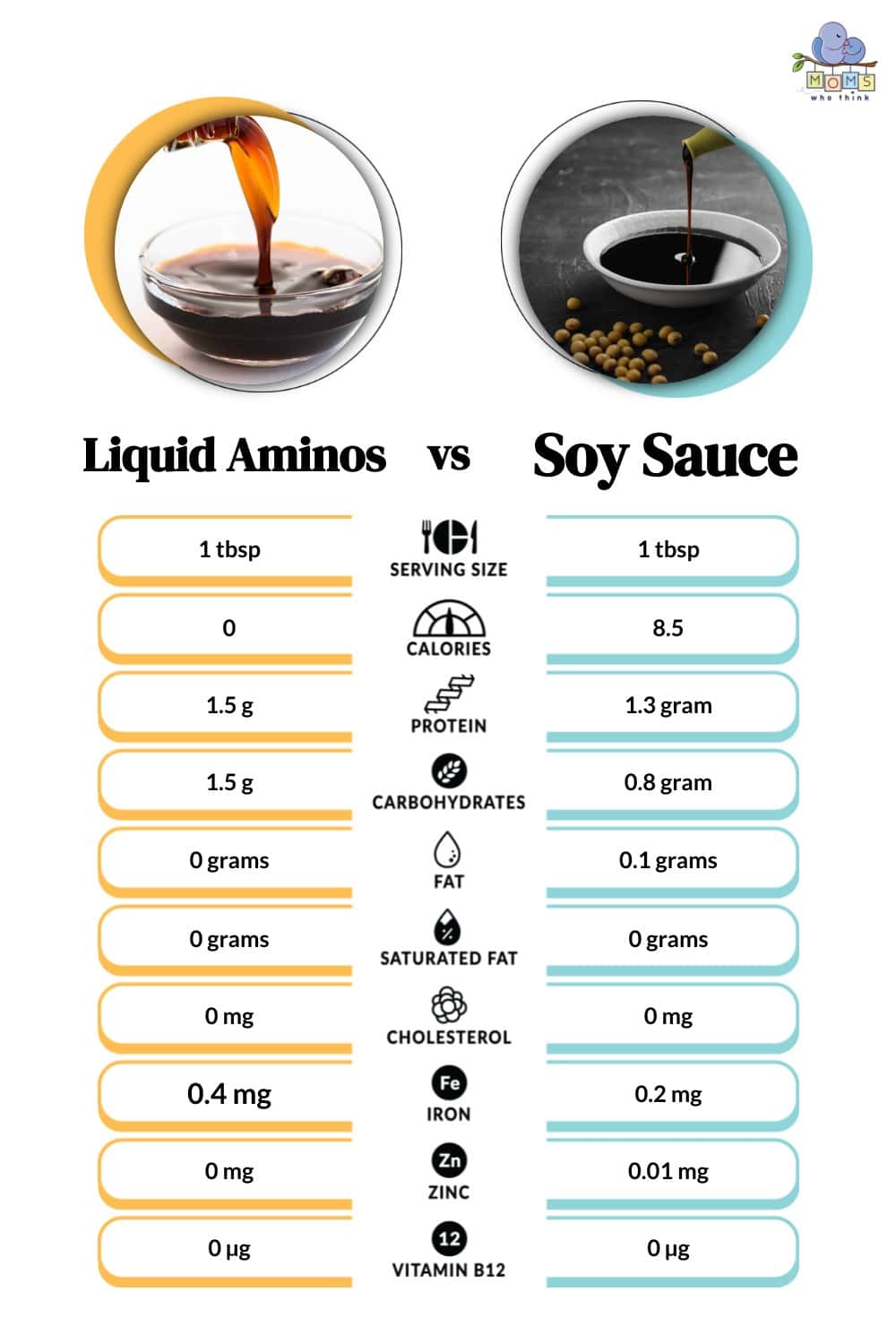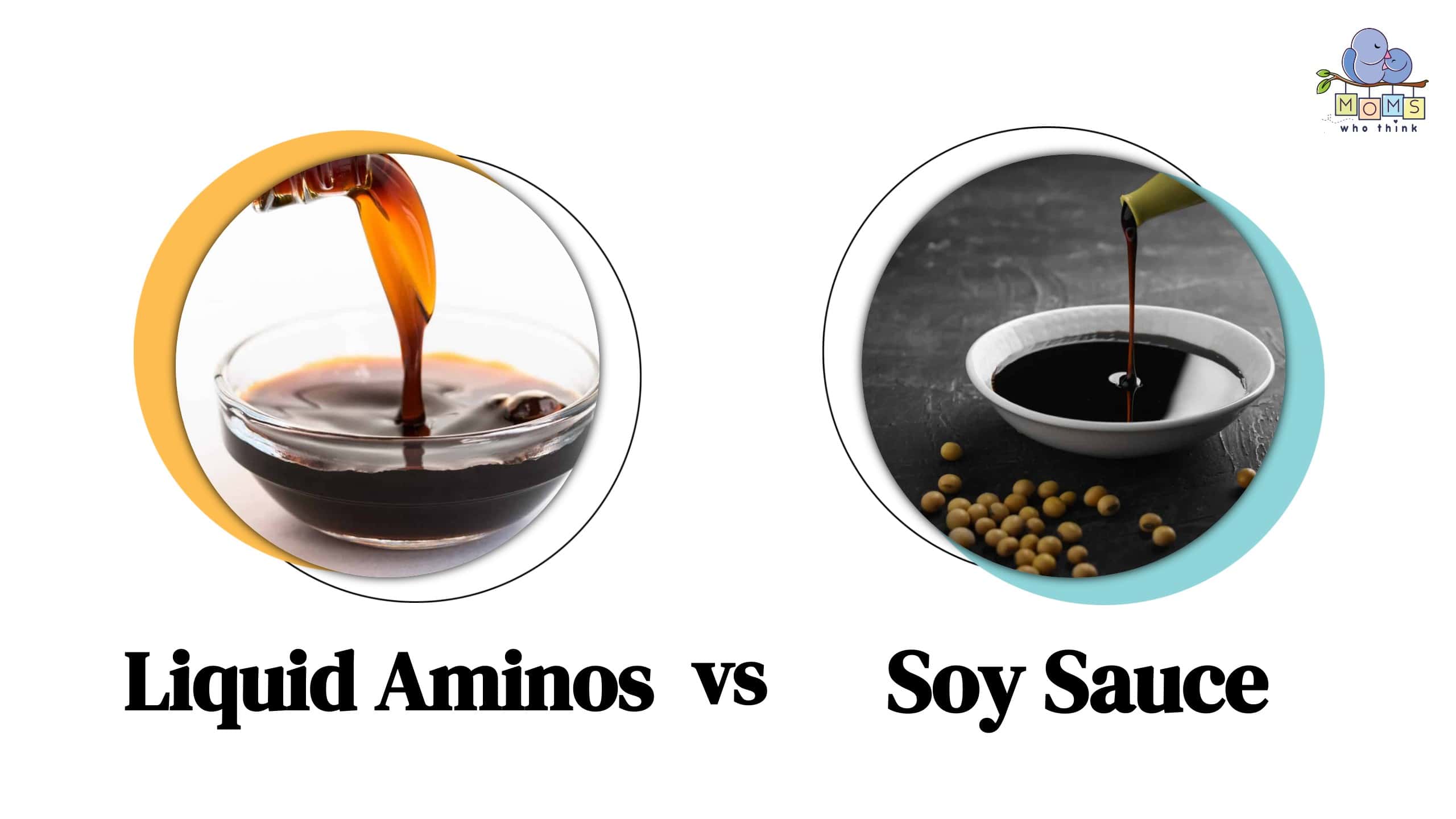Soy sauce is a common condiment to add to Asain dishes. It has an umami flavor and brings the right amount of life to many recipes. However, Soy sauce is also higher in sodium and is not gluten-free because it contains wheat. For those with allergies or sensitivities to certain ingredients, there is an alternative condiment that tastes very similar: liquid aminos. There are a few similarities between the two. However, their differences are enough to set them apart from one another. Soy sauce has a higher sodium content, is not gluten-free, and has a more umami flavor than liquid aminos.
What is Liquid Aminos?
There are two types of liquid aminos: coconut liquid aminos and liquid aminos made from soybeans. Coconut liquid aminos are made when coconut sap soaks in salt and water. In order to make the other liquid aminos, soybeans are treated with an acidic solution. Doing this will break down the essential amino acids necessary for our health.
Liquid aminos have plenty of health benefits. For starters, they are a gluten-free option for those who may have sensitivities to soy sauce. This is because they are not made with any wheat.
Additionally, amino acids are essential to our health. Liquid aminos contain both nonessential and essential amino acids. Nonessential amino acids are acids that your body produces. Essential amino acids, on the other hand, can only come from our diet. Therefore, eating liquid aminos allows your body to tastefully consume those essential amino acids! Furthermore, liquid aminos do not have any chemical preservatives.
Liquid aminos have a more mild flavor than soy sauce. Yet, it can be higher in sodium, much like soy sauce, because it is made with soybeans unless you consume coconut liquid aminos, which naturally have less sodium.

©Micaela Fiorellini/Shutterstock.com
What is Soy Sauce?
Soy sauce is a condiment made of soybeans and wheat that are fermented. It is a popular condiment in Asian dishes and came on the scene over 3,000 years ago in China.
To make soy sauce, you only need four ingredients: soybeans, salt, fermenting agents, and wheat.
There are a couple of different processing methods for soy sauce. These various processing methods will produce distinct soy sauce flavors and colors, including the chemical and traditional methods.
There are also several different types of soy sauce, including Tamari, Shiro, Saishikmoi, Light Soy Sauce, and Dark Soy Sauce.
Soy sauce has a high sodium content, and the flavor is often described as being salty and umami. Since the soybeans undergo fermenting, many diverse substances exist in soy sauce, including sugars and alcohols.

©aomas/Shutterstock.com
Liquid Aminos vs. Soy Sauce: Can You Substitute Them in a Recipe?
Differences between liquid aminos and soy sauce include how each is processed, health benefits, flavor, and price differences. A common question is, can you substitute liquid aminos for soy sauce and vice versa? The answer is yes. It is entirely possible to substitute the two for one another, especially if you are looking for a healthier alternative to soy sauce. Be sure to remember the differences between flavors, though; however, both can adapt well and be interchangeable in most recipes! Soy sauce gives off a stronger and more distinct flavor and aroma. The popularity and adaptability of soy sauce give it the ability to be versatile and added to so many different recipes!
Liquid aminos are a healthier option. It provides several amino acids that our body needs while giving a unique flavor many people enjoy. It will add a sweeter and milder taste but still can bring any dish to life!
Ingredients and Processing of Liquid Aminos and Soy Sauce
The main difference between liquid aminos and soy sauce is the ingredients and processing method. Both use soybeans; however, the soybeans are processed differently, producing distinct outcomes.
Soy sauce is made in a couple of different ways. Regardless, the most popular method is the chemical production method. It only takes a few days, and it is also cheaper. This method includes mixing soybeans with hydrochloric acid and giving the soybeans time to break down. On the other hand, the traditional method includes fermenting the soybeans and wheat. It can take months to ferment completely. However, this processing method will produce a soy sauce rich in aroma and flavor.
Liquid aminos are made by covering the soybeans with a distinct acidic solution. In doing so, the amino acids that soybeans have will break down. This process doesn't include wheat, making it a great gluten- and wheat-free option!
Health Snapshot
Another difference lies in the health benefits of the two. Since soy sauce is fermented and contains wheat, there is a high sodium content, which can affect a person's blood pressure and heart. Additionally, soy sauce contains MSG, which is a flavor enhancer. While this is common, some people can be sensitive to MSG. Nevertheless, there are a few different health benefits of soy sauce. Several studies suggest soy sauce promotes digestion and gut health. It is also a good source of antioxidants, which are great for your heart.
Liquid aminos have a few health benefits and downfalls as well. First, as stated earlier, liquid aminos contain nonessential and essential amino acids. More specifically, aminos acids are important to protein and can benefit muscles, immunity, and cell signaling. Consuming the essential amino acids our body cannot produce through liquid aminos is a great option.
Another great health benefit is that it is naturally gluten-free. Unlike soy sauce, the soybeans in liquid aminos do not contain any wheat. However, the sodium content of liquid aminos is also a little high.

More Differences Between Liquid Aminos and Soy Sauce
Liquid Aminos are more expensive than soy sauce and are only sometimes readily available in the grocery store. The price ranges from $11 to $30, while it's not uncommon to find soy sauce in the grocery store for under $5.
Another difference between liquid aminos and soy sauce is the flavor. Soy sauce has a very distinct flavor that is umami and salty. The aroma and taste of soy sauce will vary depending on the processing and type. Regardless, overall, the flavor is quite strong. Liquid aminos, on the other hand, are milder and sweeter in flavor. Therefore, if you enjoy the flavor of soy sauce yet wish it wasn't as strong, liquid aminos may be a great choice!
In Conclusion
Choosing between liquid aminos and soy sauce is a personal choice. If you are searching for a delicious condiment substitute to soy sauce that still tastes great and is easy to add to any dish, liquid aminos are a great option to try!
Soy sauce is a very popular condiment that has been around for thousands of years! It can bring your dish to life and add a flavor unlike any other. Regardless of which one you choose, there are pros and health benefits to choosing either one of these condiments!
Soy Sauce and Liquid Aminos Posts
- Tamari vs. Soy Sauce: 3 Differences, Dishes for Each, Nutrition Comparison
- Coconut Aminos vs. Soy Sauce: 3 Differences & Which is Healthier
- How to Make Healthy Stir-fried Pork
- Chicken in Orange Sauce Recipe

